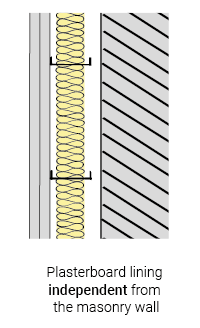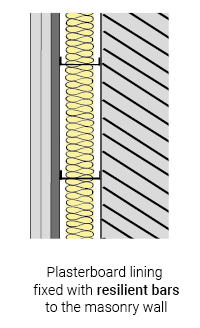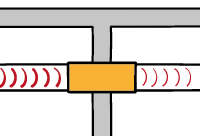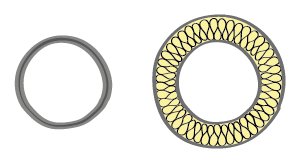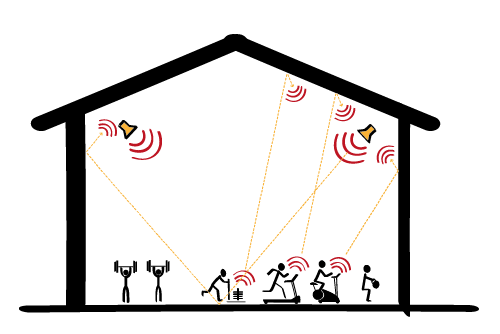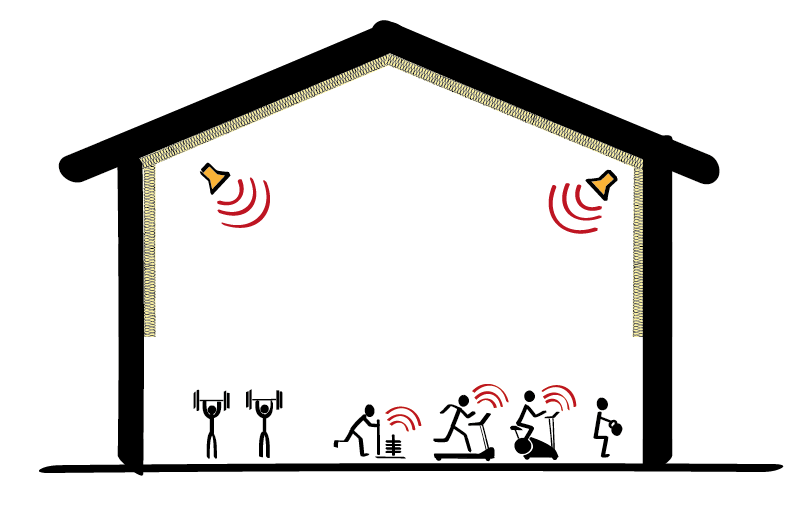
In sport, fitness and gym facilities, many In In
In sport, fitness and gym facilities, many activities and sources generate airborne noise including:
- Power amplified sound systems
- Exercise machines
- Weights dropped (controlled or uncontrolled) on structures
- People chatting, cheering, shouting, etc.
- Other noises specific to some sports (i.e. hockey, tennis, football, etc.)
This part explains the different paths of airborne noise transmission from the gym spaces to the adjacent/nearby noise sensitive receptors.
For each transmission path, it explains what happens and gives ideas of noise control solutions.
Note 1: what is airborne noise exactly? go to this section in part 1.
Note 2 : read Who could the facility disturb in part 1 to know what the noise sensitive recptors could be.
Enjoy the read!
(See at the end the references used to confirm the concepts)

Do you want to be notified when new posts are published?
Why don’t you subscribe to Atelier Crescendo’s newsletter by clicking here?
Airborne noise transmission paths in sport, fitness and gym facilities
The main transmission paths of airborne noise are:
- through the building façace.
- through the internal building fabric and;
- via the ventilation systems.
It is also useful to control the sound reverberation in noisy spaces.
Follow the links to read what happens and know ideas of noise control solutions for each transmission path.
- Noise transfer through the building façade.
- Noise transfer through the internal building fabric.
- Noise transfer via the ventilation systems.
- Control the sound reverberation.
Noise transfer through the building façade of sport, fitness and gym facilities
What happens?
In sport, fitness and gym facilities, activity and music noise:
- transfers through the façade,
- and propagates through the air to the nearest sensitive receptor.
Local Authorities often ask to consider this aspect to make sure the new facility doesn’t cause an adverse impact on the neighbours.
To do this, you need to undertake a noise impact assessment. 
Note
Most of the time, music and activity noise impact assessments aim to not exceed (to a degree) the existing noise environmental noise levels at the receptors. There are called ‘subjective assessments’.
But sometimes, undertaking a subjective assessment is not the most ‘reasonable’ approach.
For very quiet sites, exceeding slightly the existing noise environmental noise levels may not cause an adverse impact.
In this case, undertaking an assessment based on not exceeding (again, to a degree) an objective requirement may be more appropriate. This requirement, usually from a guideline or a standard, has to be discussed and agreed with the Local Authority.
You call such as assessment an ‘objective assessment’.
What are the noise control solutions?
There are two main solutions to control music and activity noises in sport, fitness and gym facilities.
Solution 1: Improve the façade elements and/or the roof

You generally do it by creating cavities with dense & rigid board elements such as:
- plasterboard lining on a frame with insulation in the cavity to improve the performance of the external walls.
You may need to decouple it from the rest of the building structure by introducing resilient fixings or, when possible, simply make the frame independant.
Examples of resilient fixings are resilient bars or resilient clips.
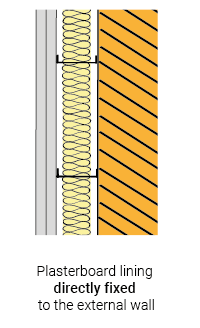
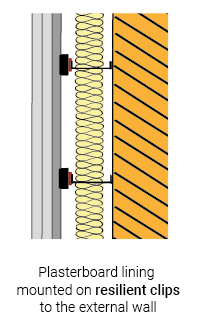
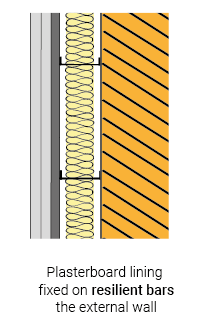

- plasterboard ceiling on a frame with insulation in the cavity to improve the performance of the roof.
You may need to decouple it from the rest of the building structure by introducing resilient fixings.
As above, examples of resilient fixings are resilient bars, clips or hangers.

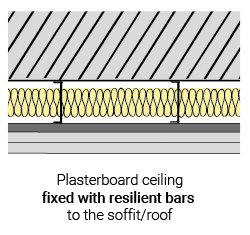
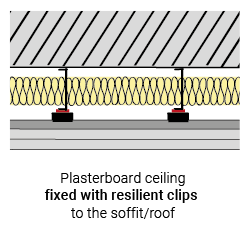

- if the façade contains glazed elements, you may need to think about high performance double or triple glazing.
Sometimes, secondary glazing is necessary when you need to increase the sound insulation performance at low frequencies.
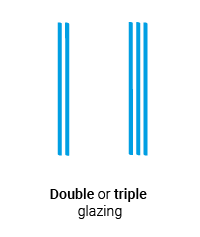

Solution 2: Install a noise limiter

A noise limiter is usually a secondary solution.
It is a device that limits (!!) the music levels emitted within a space to avoid too much noise spilling out of a facility.
This way the music levels stay below certain thresholds at the nearest noise sensitive receptors.
Note
The word thresholds here is with an “s” because you set the noise limiter in different frequency bands (or ranges).
Noise transfer through the internal building fabric of sport, fitness and gym facilities
What happens?
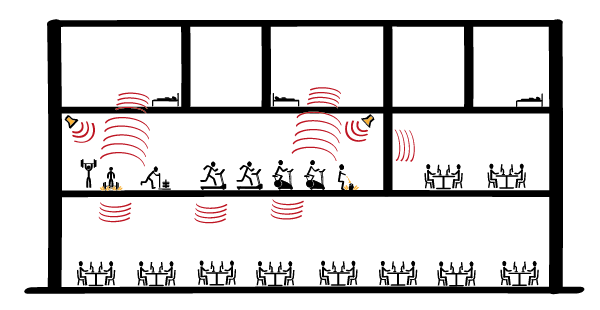
In a building, the airborne noise transfers through the wall/floor constructions into adjacent spaces.
What are the noise control solutions?
Depending of the site and the context, you may have to implement some or all the following noise control solutions.
Solution 1: Improve the floors

You can improve the airborne sound insulation performance of a floor construction with:
- a dense suspended ceiling that you decouple from the main structure with resilient fixings such as resilient bars, clips or hangers.


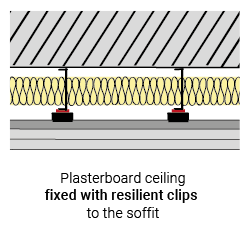
Note
you may also need to consider a floating floor system in the gym.
However, this is more to control the impacts of weights dropped and vibrations of some activities & equipment (see future parts on vibration isolation).
Solution 2: Improve the walls
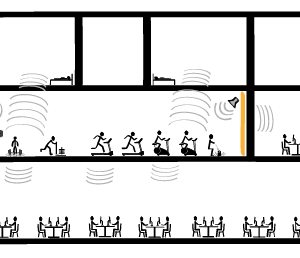
You can improve the airborne sound insulation performance of external wall constructions in vary many different ways.
However, these two systems are recurrent when receptors are fairly close (< 20m) to the facilities :
- Drylining or ‘sandwich‘ systems. Most of the time, they include plasterboard on the indoor side.
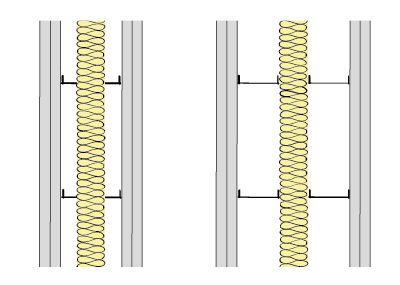
- Dense linings to masonry walls.
For both methods, it might be useful to think about introducing:
- a larger cavity to better control low frequency transmission.

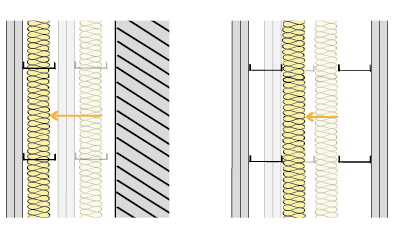
- some decoupling elements to increase their performance such as
- acoustic studs.
- resilient clips.
- resilient bars.
- or even make the studs independant from the outer structure.
Note
If the facility is to move in an existing building, sound insulation testing are necessary to rate the performance of the separations elements and work out the best solution for improvement.
sometimes, a full box-in-box construction will be necessary
Noise transfer via the ventilation systems of sport, fitness and gym facilities
What happens?
The music and activity noises from sport, fitness and gym facilities:
- ‘enter’ the ventilation systems
- propagate through the ducts, and;
- break outside or in another space within the same building (although this last one is unlikely because most facilities have their dedicated ventilation system).

What are the noise control solutions?
To control the noise transfer via a ventilation system, you can think about the following solutions.
Solution 1: Install attenuators
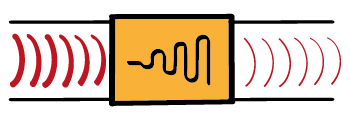
This is probably the most common and easiest solution.
Their performance mainly depends on their length and their free area.
However, be aware that attenuators shouldn’t be installed anywhere in the ductwork for optimal acoustic performance.
The best locations to install the attenuators are:
- centered in the wall separating the noisy space and the rest of the building;
- or at the wall separating the noisy space and the rest of the building.

Solution 2: Strategically locate the inlets and outlets
Ideally, you should locate the inlets and oulets of a ventilation system as far away from the sensitive receptors as possible. (although some sites/buildings don’t offer a great amount of flexibility).
This way, you can reduce the performance of the attenuators (and save some cost)… or completely omit them.
Solution 3: Select larger and square ducts (for low frequency attenuation)
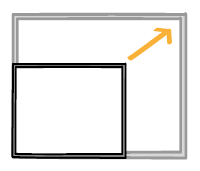
If you need to attenuate low frequency sounds, you could think about selecting large and square ducts.
Note
This is only worth if:
– you have long runs of ductwork.
– you have enough space for large ducts.
Solution 4: Select lined ducts
Note
it is only worth if:
– you have long runs of ductwork.
– the pressure drop they create doesn’t require a higher air flow (which would be counter productive). This needs to be checked with the mechanical engineer on board.
Control of sound reverberated (i.e. reflected) in sport, fitness and gym spaces
What happens?
Within most sport, fitness and gym spaces, medium to high levels of sound are generated.
With a majority of hard surfaces (i.e. sound reflecting), the spaces can be very reverberant and amplify these sounds.
This also makes it harder to control the noise transfer from the gym to other receptors (within or outside of the same building).

